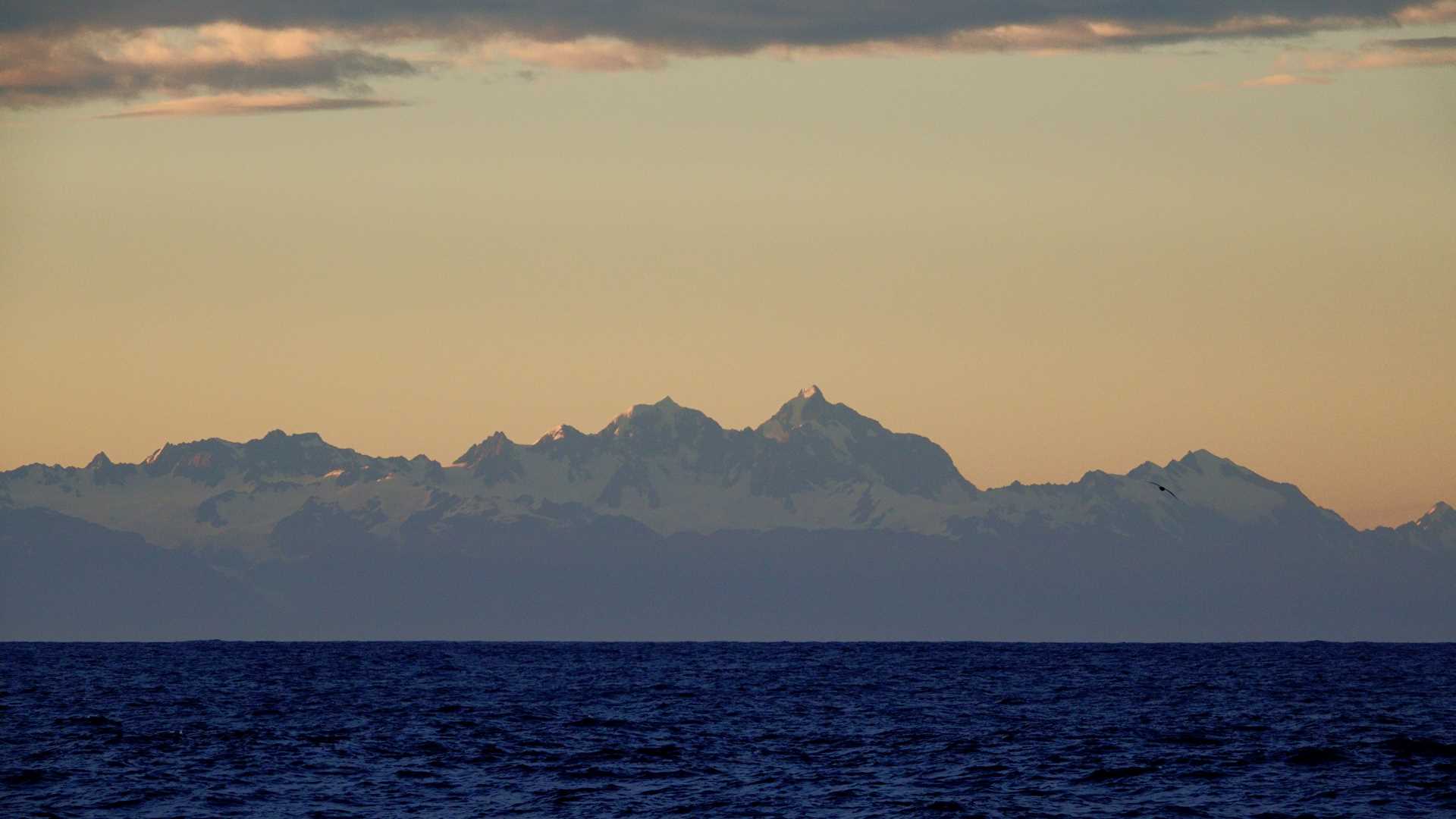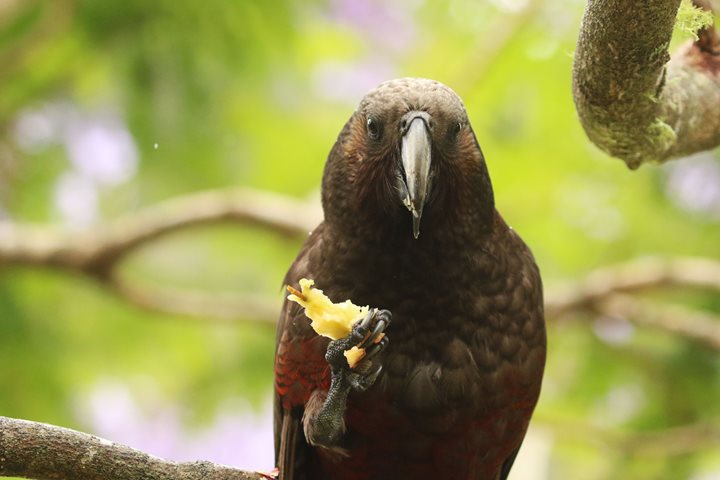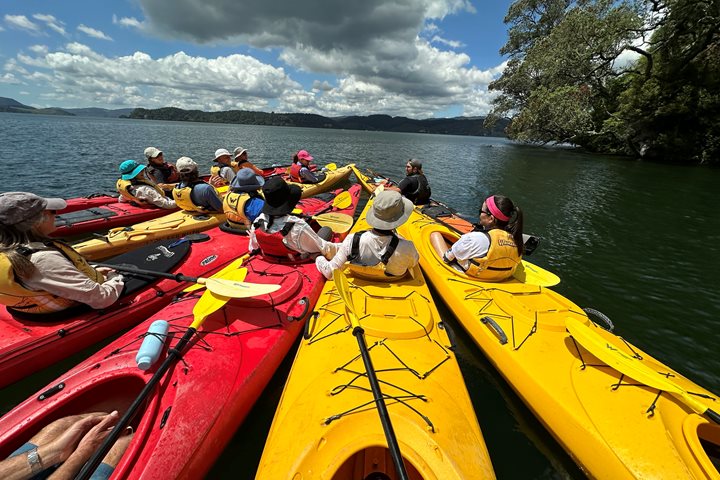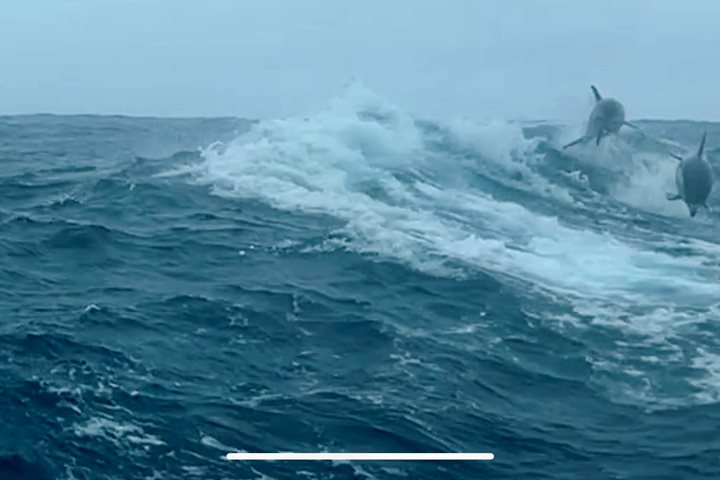With smooth, following seas, National Geographic Orion made her way north along the western coast of New Zealand’s South Island. As day broke, the massive peaks of the Mount Cook Range were under clear skies with a touch of alpenglow light on the ice- and snow-covered peaks. At 3,724 meters, Mount Cook – or more appropriately called by its Maori name, Aoraki (Sky Piercer) – is the tallest peak in New Zealand, the crown of the Southern Alps. We sailed for most of the day with this dramatic coastline on our starboard side in clear view. Late afternoon brought light showers and low clouds, only to be cleared off by northerly winds and high pressure.
Along with the stunning scenery and very pleasant weather that afforded us the opportunity to spend quality time taking it all in on the decks, we were escorted by a near constant presence of albatrosses and other seabirds. They glided gracefully in the light winds on a near constant quest for food in the waters of the Tasman Sea, the body of water separating New Zealand and Australia, nearly 1,200 kilometers away. Throughout the day, several presentations were scheduled. The first was on “Threats to Seabirds in the Southern Ocean” by Jayden O’Neill. Cultural Navigator Tua Pittman shared the story of the peopling of the South Pacific and their epic voyages. Lastly, National Geographic representative Ralph Lee Hopkins spoke on travel in the days before Covid-19 changed the world. Our day was punctuated with a brief but impressive sighting of two blue whales, the largest animals that have ever lived.







